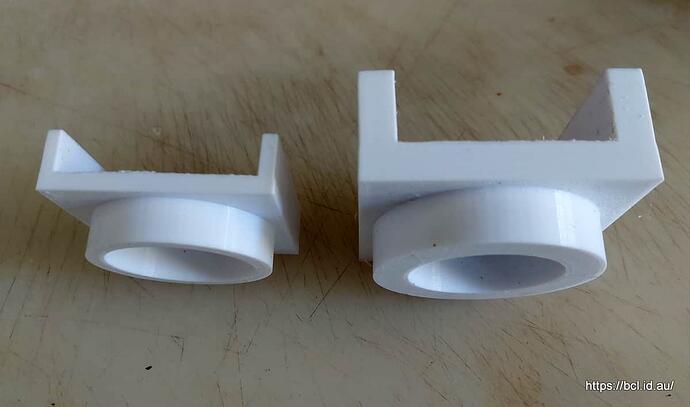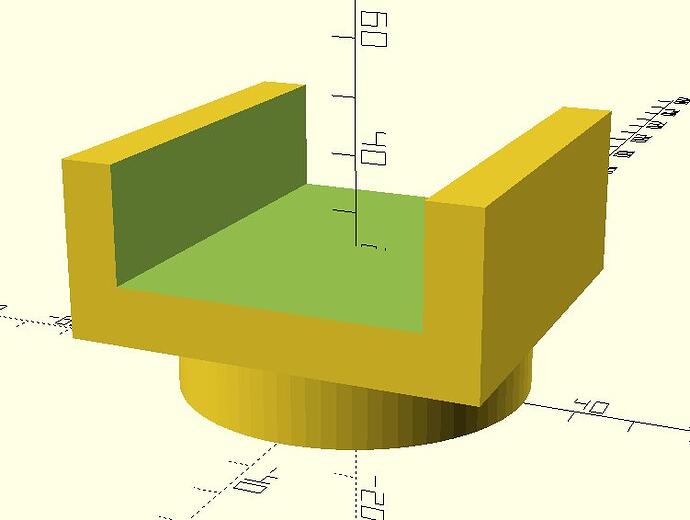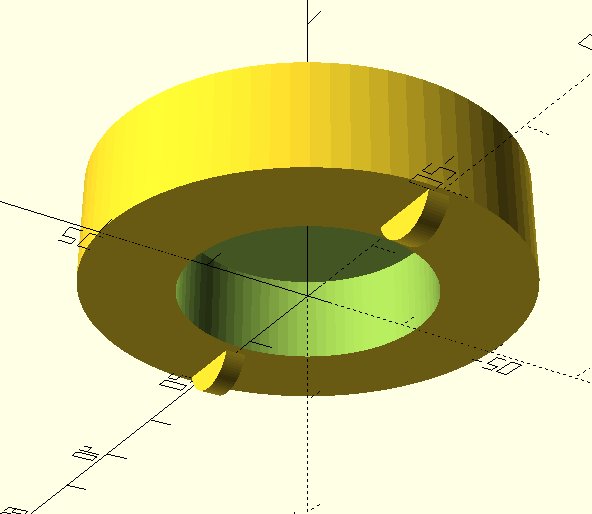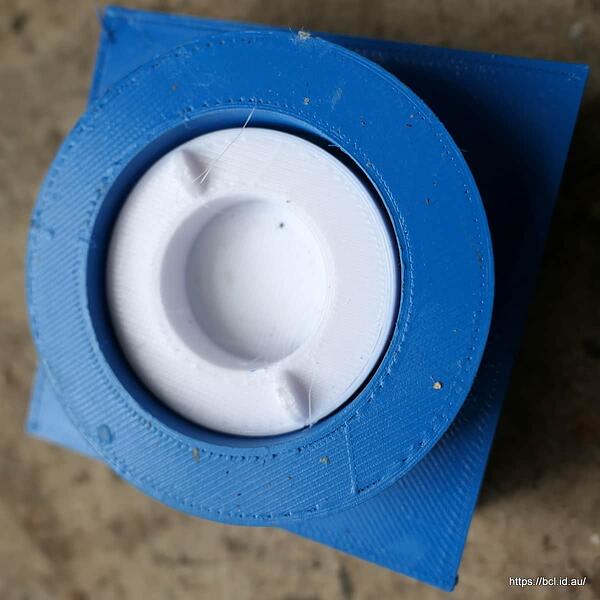Overnight I printed a piece which sits on top of the jack supplied with my car. Its sole purpose is when jacking up my camper it ensures the jack is centrally located on the small 50mm axle.
I initially printed a test version using only 15% infill - no good for the real thing as the weight of the camper would crush that but it was to test for size and only took a couple of hours to print.
Test piece on left only weighs 20gms.
The final piece (right) was printed with 100% infill, ie it is solid plastic, weighs 108 gms and took 8 hours to print (hence overnight). For the plastiphobes - I used PETG for durability.
Tried it out this morning and it does the job just fine.
As usual it was designed in OpenScad:
The code is very simple. Using variables means it can be scaled up or down according to the need (as I did with the test piece).
//Jack Mount for Camper
//Variables
var=2; //fit variable
diaj=40+var; //diameter of Jack head
depj=14; //depth of Jack head
wdax=50; //axle width (Square)
wdth=10; //width of parts
//end variables
$fn=80;
//Jack Head Cover
difference(){
translate([0,0,0])cylinder(h=depj,r=(diaj/2)+wdth,center=false);
translate([0,0,-1])cylinder(h=depj+2,r=diaj/2,center=false);
}
//Axle holder
translate([-(wdax+(wdth*2))/2,-(wdax+(wdth*2))/2,depj-.1]){
difference(){
translate([0,0,0])cube([wdax+(wdth*2),wdax+(wdth*2),(wdax*0.4)+wdth],center=false);
translate([wdth-(var/2),-wdth,wdth])cube([wdax+var,wdax*2,wdax],center=false);
}
}
Feeling quite pleased with myself this morning. I have an old hydraulic bottle jack that I use at home but it only has a top of about 25mm diameter, I might make an insert so this piece can be used with that.
Keeps me off the streets.









